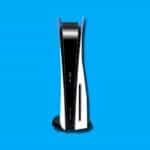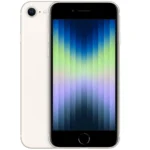It’s always useful to know whether your iPhone is connected to a 2.4 GHz or 5 GHz Wi-Fi network as it can help you understand the range and speed of your connection. The 2.4 GHz frequency band offers a larger coverage area but transmits data at slower speeds. On the other hand, the 5 GHz frequency band provides faster data rates with a shorter range. But the iPhone won’t, by default, tell you what the GHz speed of a Wi-Fi network is. So, if you go into your wireless settings or view the network details, you won’t get much information (unless, of course, the network is named 2.4GHz or 5GHz in some way).
However, there’s still a way to get the GHz information using an app created by Apple that’s not too difficult to use. That app is called the AirPort Utility, and you don’t have to use an airport router to make use of it.
How to Use AirPort Utility for WiFi Monitoring
Checking the GHz band your iPhone is connected to can help you troubleshoot connectivity or prioritize certain devices for better speeds. While iPhones don’t have a built-in way to see this information, Apple’s AirPort Utility app provides an easy solution. Here’s how to do it:
Requirements
- AirPort Utility App: It’s a free app downloadable from the App Store.
- An Apple AirPort Router: (Optional) This is the most useful scenario, but the app has additional features even without an AirPort router.
Steps
Install the AirPort Utility App: Search the App Store for “AirPort Utility” and install the free app.

Enable the Wi-Fi Scanner:
- Open your iPhone’s Settings.
- Scroll down and find the AirPort Utility app in the list.
- Tap it and toggle the “Wi-Fi Scanner” switch to the on position.

Launch AirPort Utility: Open the app you installed.
Initiate a Scan: Tap the “Wi-Fi Scan” button in the top right corner of the app.

Locate Your Network and Find the Channel: Wait for the scan to complete. Find the name of your Wi-Fi network (SSID) in the list. The “Channel” column will indicate its band:
Calculate Your Wi-Fi Band based on the Channel Data You See
| Channel Number | Wi-Fi Band |
|---|---|
| 1-11 | 2.4 GHz |
| 36 and above | 5 GHz |

Additional Notes:
- Even without an AirPort Router, you can still use the Wi-Fi scanner function to see networks around you and their channels.
- If you have a dual-band router and want to ensure you’re connecting to a specific band, consider giving your 2.4 GHz and 5 GHz networks different names.
Key Takeaways
- Identifying Wi-Fi GHz on an iPhone helps users understand their network’s range and speed.
- Users can find Wi-Fi GHz information using an Apple created App
- Knowing the frequency band assists in troubleshooting and enhancing iPhone performance.
Video Tutorial On Getting Your Wi-Fi GHz On iPhone
This section covers the steps to find out if your iPhone is connected to a 2.4 GHz or 5 GHz Wi-Fi network, and what that means for your internet experience.
Alternate Methods
There are some alternate methods you can use to get the information on the frequency of the network directly from your router. The success of these methods will vary depending on whether or not you can log into the router and whether the router displays the information.
See If The GHz Speed Is In The Network Name:
If the name of the WiFi network you’re connected to has “2.4GHz” or 5GHz” in it, that’s a good way to determine the GHz band that’s being used.
Connect To The Router Directly:
- Settings: Go to Settings and then tap on “WiFi”.
- Find Your Network: Tap the blue information icon (it looks like a lowercase “i”) next to your connected network.
- Look at the Router Address: You’ll see the “Router” IP address (e.g., 192.168.1.1, 192.168.0.1, etc.). Copy this address.
- Paste into a Browser: Open a web browser and paste the router’s IP address into the address bar. Press enter.
- Login: You’ll likely need your router’s username and password. This information is often on a sticker on the bottom of the router itself.
- Find Wireless Settings: Once logged in, look for Wireless or WiFi settings and it should show which bands are broadcast.
Using iOS Tools and Utilities
You can use the AirPort Utility app to scan Wi-Fi networks, which will show detailed information, including the frequency band. You need to enable the Wi-Fi Scanner in your iPhone’s settings to use this feature.
Troubleshooting Connectivity Issues
If you experience connectivity issues, check your Wi-Fi GHz and band settings. Congested networks can be resolved by switching bands, if your router supports dual-band options. Also, certain iOS tools may help identify interference or signal strength problems.







